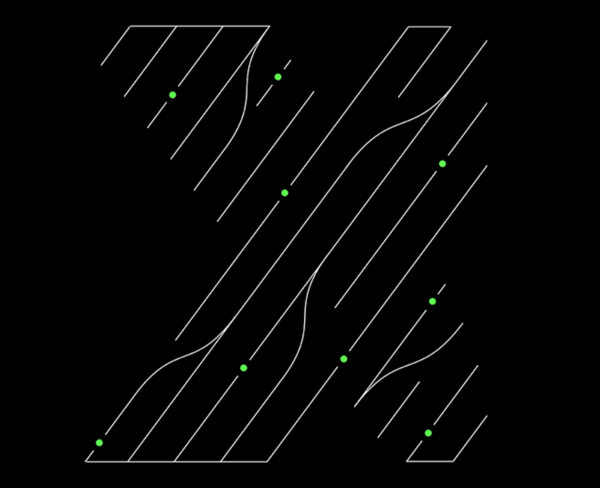Qué es process mining o la minería de procesos
La minería de procesos se define como una disciplina analítica para descubrir, controlar y mejorar los procesos tal y como son en realidad y no como crees que podrían ser.

1. Before we start: What is a process?
Let’s get back to basics by defining processes first. A process is a series of actions or steps repeated in a progression from a defined or recognized 'start' to a defined or recognized 'finish'. The purpose of a process is to establish and maintain a commonly understood flow that allows a task to be completed efficiently and consistently. Every step of a business process leaves a digital footprint in your transactional systems in the form of event log data. Process mining software works by using this event log data to create a living picture of what your actual processes really look like — which does not always match the definition you might have worked out in process mapping workshops.

Of course, some process steps don’t necessarily take place in a transactional system — for example, sending an email or opening a spreadsheet. Task mining is the technology that collects desktop data like this. When combined with Celonis process mining, it can give an even more granular view of how work gets done within an organization.
2. What is process mining?
Process Mining: Getting an in-depth look at your business processes
Every process step you take leaves digital traces — event log data — in the transactional systems you use. Process mining extracts those digital traces and meaningfully connects them to help you understand your business better. Celonis uses the event log data from process mining to create a digital twin of your business processes, helping you visualize every move your business makes in real time. The digital twin shows you your processes as they really are, allowing you to uncover opportunities for value, and to identify and fix inefficiencies. The beauty is that it can apply to any process for each system.

Process Mining: From academia to the boardroom
10 years ago, process mining started out as an academic theory. Today, it’s a well-established business technology, used by thousands of organizations around the world, with hundreds more starting every day. It’s been widely recognized — by enterprises, analysts, and the media— as the best way to truly understand your business processes. In 2023, process mining was given its own Magic Quadrant™ by Gartner®, validating its growing prevalence amongst enterprises.
Professor Wil van der Aalst refers to process mining as “the bridge between data science [which includes algorithms, machine learning, data mining, and predictive analytics] and process science [which covers operations management and research, business process improvement and management, process automation, workflow management, and optimization].” Process mining is the technology at the heart of the Celonis Process Intelligence platform, enabling enterprises to fully understand how their core business processes run, find the hidden opportunities, take intelligent, automated action to improve performance, and unlock value across the enterprise. Want to become a process mining expert, fast? Check out our free virtual process mining course, led by the Godfather of Process Mining and Celonis Chief Scientist Prof. Wil van der Aalst.
3. Why process mining matters
Process mining reveals how your business processes actually run, and can help you change them for the better. Making your business processes run better has a well-proven, immensely positive impact on your top line, bottom line, and green line. Many businesses don’t realize how variable their processes are, and the impact that variability has on, well, everything. You can’t fix what you can’t see, and most businesses aren’t seeing the full picture of how everything’s actually getting done across programs, systems, and departments. Businesses using Celonis are often shocked to see how their processes flow in real life compared to how they should flow in theory. This is part of the great disconnect at the heart of many organizations today — departments struggle to communicate, systems don’t work well together, and, subsequently, processes go haywire. This leads to lost value, low efficiency, unmet customer needs, and greater environmental and resource burdens.

Process mining solves for this by acting as a much-needed connector between systems, programs, processes and people, shining a light into the inner workings of businesses so everything and everyone can work together more effectively.
Read more about why process mining matters.
4. How does process mining work?
Process mining works by extracting data from event logs readily available in today’s information systems, in order to visualize business processes — and all of their variations — as they run.

Check out how process mining works for a more detailed breakdown.
5. What are the benefits of process mining?
There are many benefits to process mining:
Objective, fact-based insights: Process mining offers objective, fact-based insights, derived from actual data, to help you audit, analyze, and improve your existing business processes.
Faster, cheaper and more accurate Process mining is faster, cheaper and more accurate than lengthy and often subjective process mapping workshops.
No rip-and-replace needed Process mining works on top of your existing systems, helping you to leverage your existing technology investments. There is no rip-and-replace involved. We'll cover the benefits of process mining in more detail below.
Process mining use cases
Process mining use cases are almost infinite, given that the technology cuts across multiple business functions and industries.
For instance, process mining can make supply chains more resilient by highlighting weak points and eliminating inefficiencies. It also has a big role to play in sustainability efforts. Any function can be made more efficient through this technology.
Common process mining use cases among Celonis customers today include:
In Finance, speeding up transformation efforts and delivering better quarter-on-quarter results.
In Supply Chain, increasing resiliency.
In Shared services, driving the evolution from cost center to always-on value magnet.
In System transformation, minimizing risk and accelerating all phases of migration journeys.
In Sustainability and ESG, reducing shipping emissions and driving sustainable spend management.
In Process excellence, uncovering hidden value opportunities, fast.
These use cases span multiple process mining customer across many industries, including Automotive, Consumer, Energy, Financial Services, Healthcare, Manufacturing, Professional Services, Retail, Telco and Media, Life Sciences, Pharma, Travel, and Transportation. To dive deeper into how your department or initiative can benefit from process mining, explore our solution pages.

Why process mining has become a business necessity
Change has changed. New technologies keep emerging, customer expectations keep rising, and the need for greater efficiency keeps growing at a radical pace. In this new world, adaptation is critical to a business’s survival. Companies need departments that all work seamlessly together, while driving value, finding value, and leaving no value behind. But adaptation is easier said than done because of the great disconnect at the heart of most enterprises. Departments speak their own languages. Systems don’t play well together. Processes are hard to see and harder to improve. So value is lost, efficiency is low, and customer needs are left unsatisfied. To actually enable adaptation, businesses are missing a shared understanding of how things actually run. They’re missing a way to connect the dots, helping everything and everyone understand how things currently work, what’s going well, what needs improvement, where value is hiding, and, ultimately, how everything can work better together for the business. This is what process mining solves for, and why it’s increasingly becoming a business necessity.
6. What problem does process mining solve?
Process mining solves the problem of not understanding how your business processes actually run, and, correspondingly, being unable to leverage them to drive greater value. It provides companies with the insights they need to visualize how their processes actually run across systems, departments, and programs, so they can understand where opportunities lie, uncover which opportunities could have the biggest impact, decide what actions to take, and measure the value they generate.

There are several benefits to process mining. The technology enables you to:
Get complete visibility over your processes Get a 100% objective, real-time, system-agnostic, unbiased view of your processes based on the data in your IT systems, helping you find, frame, and capture value opportunities.
Quantify the impact of process improvement So you can demonstrate value before and after implementing a fix.
Get stakeholder alignment Make data-driven suggestions complete with expected ROI — driving stakeholder buy-in and alignment.
Prioritize initiatives effectively Prioritize and direct energy and resources as needed by quantifying the value that stands to be gained.
Get to value quickly and easily Deliver value quickly and cheaply — with Celonis, process mining is easy to implement and can deliver results in as little as four weeks.
Read more about what problem process mining solves.
7. When to use process mining?
It’s never too early or too late to start using process mining in your business. As process mining becomes a business necessity across industries, the time to start is now. Process mining can be especially useful if your business is:
Merging, partnering, or integrating with another business
Migrating systems or updating your tech stack
Searching for new ways to generate value
Strengthening sustainability measures
Tightening up compliance programs
Transforming shared services
Improving finance and operations processes
Building resiliency within your supply chain
Harnessing new technology like AI and LLMs
Boosting productivity and efficiency within your workforce
Read more on when to use process mining.

8. Process mining for dummies
To get all of the basic process mining information you’ll need together into one convenient place, Celonis made you an eBook: Process Mining for Dummies. It’s everthing you need to know about process mining in a single book, written in the easy to understand, hard to forget style that ‘For Dummies’ manage so effortlessly. Process Mining for Dummies will help you understand what process mining is, why it’s a big deal, how it can help you (or your department, or your industry), how ready your business is for it, and how to actually get started. Download Process Mining for Dummies

9. In the Process: Video series about Process Mining basics
If you’d rather listen and watch than read, check out our newest video series In the Process. Over the course of four videos, you’ll learn the basics of process mining, including what process mining is, how process mining works, why process mining matters, and how to get started with process mining. Watch the video series
